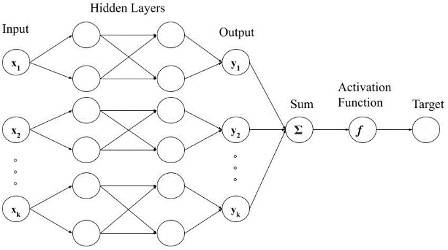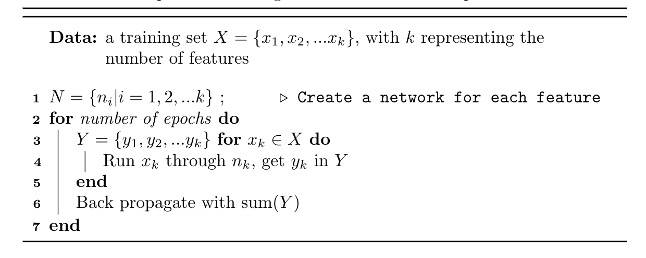观点评论|菁英小记者·留学论文展示-Ruoran Zhang
_原题为 菁英小采访人员·留学论文展示-Ruoran Zhang
Additive Neural Network Model in Analyzing Heart Disease Factors
菁英小采访人员_Ruoran Zhang 编辑_刘薇禛平 设计_张禹
Abstract
This paper uses an Additive Neural Network model built with neural networks to analyze the key factors in determining the presence of heart disease. Identifying key factors in diagnosis , could enable more accurate and efficient diagnoses, and also prioritize health interventions that have the greatest effect. However, with many machine learning algorithms, it is of ten difficult to isolate the contribution of each factor. An additive neural network that back propagates with the total loss is able to calculate each variable’s function in determining heart disease possibility.
1.Introduction
A lot of machine learning techniques are investigated to assist diagnosis and prediction of various diseases [1]. However, most of them are not able to calculate the correlation function of each parameter and the possibility of having a disease.
The introduction of an additive model in Neural Network provides further insights in the interaction of each testing factor at the cost of a limitation of accuracy. The additive model establishes a neural network that is independent from other networks for each feature in a data set. We shall be able to see some trends that align with empirical diagnosis.
2.Additive Models
Artificial neural network is a machine learning algorithm with an extensive history dating as far back as 1967 [4] while additive models were introduced relatively recently. As shown in Figure 1, an additive model constructs a separate neural network for each input feature. The sum of the outputs from each independent network is taken to calculate the loss in accordance to one single target value.

文章图片
Figure 1: Neural network additive model
The model enables us to plot and evaluate the effect of each feature on the final result. The summative pseudo code is given below.

文章图片
3.Training Procedure
The additive neural network in this paper takes 12 inputs, including both categorical and quantitative data. The quantitative data are normalized so that the network is able to catch more detailed variations. Each input has its own network with 4 layers and 300 nodes in each layer. The weights in each network are initialized with Kaiming initialization that addresses rectifier nonlinearities.
As the target output is either 1 or 0, a sigmoid function defined by the following equation is applied:
|ò(x) =1/(1 + exp(x))
The above function applied to the sum of outputs. The optimization of weights in ac-cordance of the final loss employs Adam optimizer and happens in each network separately. Adam optimizer “computes individual adaptive learning rates for different parameters from estimates of first and second moments of the gradients” [5]. The model ran 2000 epochs, reaching a final loss of 0.060.
【观点评论|菁英小记者·留学论文展示-Ruoran Zhang】4.Data
The data set used in this paper includes 303 patients’diagnostic information. Each diag-nostic information contains 13 features that are medical predictors of heart disease. Each patient’s data also includes the final target value, which is either 1 (presence of heart disease) or 0 (absence of heart disease).
5.Experimental Results
5.1 Results Analysis
The final loss after running 2000 epochs of the model is 0.060. From the plots given by the neural network, some important deciding factors of heart disease include chest pain type,

文章图片
resting blood pressure, and cholesterol level. Some of the plots are shown below.
推荐阅读
- 观点评论|印度手机市场排行榜:vivo冲进前三,你知道最受欢迎的是谁吗
- 兜售快乐|《你微笑时很美》未播先撕?程潇配音不贴脸,被骂抄袭官博关评论
- 观点评论|北大最强扫地僧许文龙考上本科:单词量一万五,能与留学生对话,欲考研北大
- 观点评论|创维电视11.11销量增长秘笈:品牌、技术、产品一个也不能少
- 观点评论|让学生做“一日校长”,除了培养他们“官瘾”,并无多少教育意义
- 人权政策|评论:遭110余国批评,美式人权被送上国际“公审席”
- 会上|邓超陈赫鹿晗上了贼船为什么会上热搜大家如何评论的
- 观点评论|八年时间攻克一种净水膜,方太的“野心”何在?
- 观点评论|从国内寄送手机到日本,有内置电池
- 时代少年团|时代少年团惊艳亮相北京卫视:只给刘耀文2秒近景,评论区炸了

![绿茶和酸奶可以同时喝吗?[绿茶]](/renwen/images/defaultpic.gif)
















